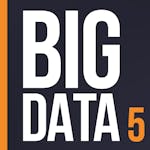Description
In this course, you will :
- Begins by presenting a framework for comprehending the various types of high-velocity data.
- explains how to use R to acquire high-velocity data, as well as how to use profiling tools and optimise R code for use with high-velocity data
- concludes by looking at how to use R to present data, including how to create interactive dashboards using Shiny—an R package that allows you to build web apps directly from R.
- This course delves into efficient R programming, offering practical strategies for working your mojo on high-velocity data.
Syllabus :
1. Problems and Opportunities with High-Velocity Data
- Perspectives on high-velocity data
- Simulating high-velocity data
- Concepts of batch data
- Handling batch data with R
- Working with near real-time data
- Handling near real-time data with R
- Concepts of real-time data
- Handling real-time data with R
- Setting a default CRAN mirror
2. Using R to Acquire High-Velocity Data
- Polling for data in R
- Interrupt-driven data acquisition with R
3. Profiling Tools for R
- Tools
- Profvis
- Rprof
- microbenchmark
4. Optimizing R to Process High-Velocity Data
- Improving the speed of loops
- Optimizing if... then... else with ifelse
- Avoid copying data
- Combining optimizations
- Use RCPP to speed up functions
- Using microbenchmark to check results
5. Using R to Present High-Velocity Data
- Static and dynamic reports
- Use R Markdown for static dashboards
- Flexdashboard and other enhancements for static reports
- Use Shiny for interactive dashboards
- Use plumber to create APIs
- Cran task view for WebTechnologies








